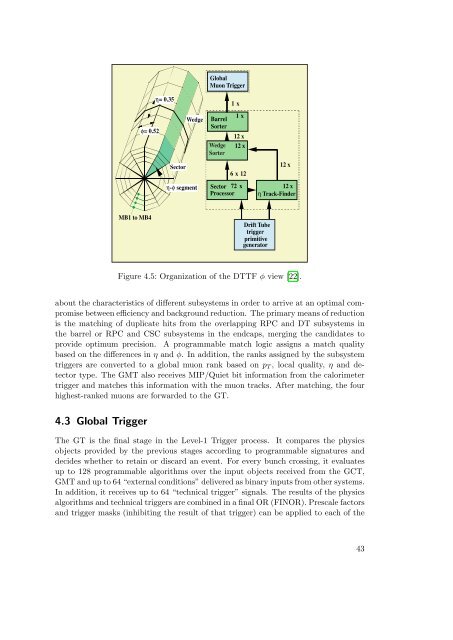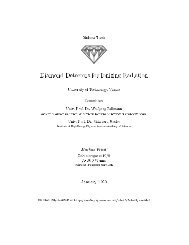Create successful ePaper yourself
Turn your PDF publications into a flip-book with our unique Google optimized e-Paper software.
Figure 4.5: Organization of the DTTF φ view [22].about the characteristics of different subsystems in order to arrive at an optimal compromisebetween efficiency and background reduction. The primary means of reductionis the matching of duplicate hits from the overlapping RPC and DT subsystems inthe barrel or RPC and CSC subsystems in the endcaps, merging the candidates toprovide optimum precision. A programmable match logic assigns a match qualitybased on the differences in η and φ. In addition, the ranks assigned by the subsystemtriggers are converted to a global muon rank based on p T , local quality, η and detectortype. The GMT also receives MIP/Quiet bit information from the calorimetertrigger and matches this information with the muon tracks. After matching, the fourhighest-ranked muons are forwarded to the GT.4.3 Global TriggerThe GT is the final stage in the Level-1 Trigger process. It compares the physicsobjects provided by the previous stages according to programmable signatures anddecides whether to retain or discard an event. For every bunch crossing, it evaluatesup to 128 programmable algorithms over the input objects received from the GCT,GMT and up to 64 “external conditions” delivered as binary inputs from other systems.In addition, it receives up to 64 “technical trigger” signals. The results of the physicsalgorithms and technical triggers are combined in a final OR (FINOR). Prescale factorsand trigger masks (inhibiting the result of that trigger) can be applied to each of the43












